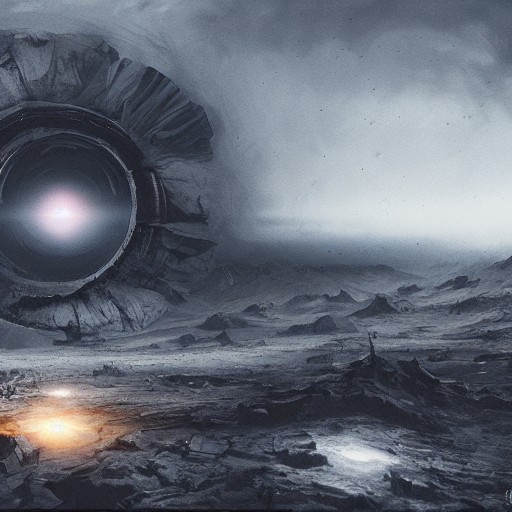Apparently, black holes are just stars that have collapsed. If a star’s gravitational field becomes too strong, it collapses and creates a black hole.
We call them black holes because not even light can escape. And because of that, all we see is blackness.
Contents
Why Nothing Can Escape From a Black Hole
How to escape from Black Hole – Escape Velocity

Many people don’t know this, but the first step to understanding black holes is understanding velocity.
Just like SPACE X needs an initial speed of at least 11 km/s in order to launch a rocket into space, the light should have a speed greater t more than 299 792 458 m/s to escape a black hole… Which is impossible according to current knowledge.
If the rocket launch speed exceeds this threshold, it can escape Earth’s gravitational field and make it into space instead. If the launch speed falls below this threshold, the rocket will fall back down to Earth
When a star starts running out of energy, it can get more power by expanding its size. This usually comes with an increased fusion rate of heavy elements in the star’s core.
The escape velocity of a star increases when it is compressed to a smaller size without changing its mass. The higher surface density means more gravitational force is exerted on it, which results in greater speeds needed to escape.
The speed of light is the fastest thing in the universe
Or at least that’s what Einstein said … light can travel at the speed of light, but anything with mass can not reach this speed. It can just come to an arbitrary close. Nothing can go faster than light!
That’s why when a star collapses to where its escape velocity hits the speed of light, nothing can get out, not even light. And … We have a black hole now.
Traveling into a black hole is the ultimate one-way trip; there’s no coming back from it.

How Are Black Holes Formed
Why are these stars compressing so much?
Towards the end of their lives, some big stars explode as supernovae. If the star’s core is more than 2-3 times as heavy as our Sun, gravity will cause it to collapse in on itself and become a black hole.
If the star loses mass, eventually, it will collapse in on itself.
When that happens, all matter becomes concentrated at the very center of the star, and it will have a radius of zero. We call this singularity.
Because the singularity has a mass equal to the core of the star that collapsed, it also has infinite density.
The Event Horizon
The event horizon– the distance from the center at which an object would have to travel at light-speed to escape the gravitational pull of a black hole– is called the Schwarzschild radius.

If a black hole 10x more massive than the Sun existed, it’s Schwarzschild radius would be 30km. According to Einstein, this great insight is known as the “Schwarzschild radius.”
Although nothing can escape from inside the event horizon, black holes don’t automatically slurp up everything nearby. It is possible to orbit a black hole without falling in. How?
The answer involves the idea of “trapped radiation.” High-energy particles, such as photons and charged particles, can escape a black hole’s event horizon. These high-energy particles are trapped on the surface of a black hole and don’t fall in.
Are there different types of black holes?
Yes, there are a variety of different types of black holes. When trying to categorize black holes, the first thing you should consider is their mass.
You may wonder why lower and upper limits exist to how much mass a black hole can have.
After all, when it’s dense enough to trap light, doesn’t it matter what its mass is? In other words, black holes should exist within a range of masses.
But that’s not what we find in practice. Our understanding of black holes isn’t perfect, but it generally breaks down into two categories – stellar-mass black holes and supermassive ones.


